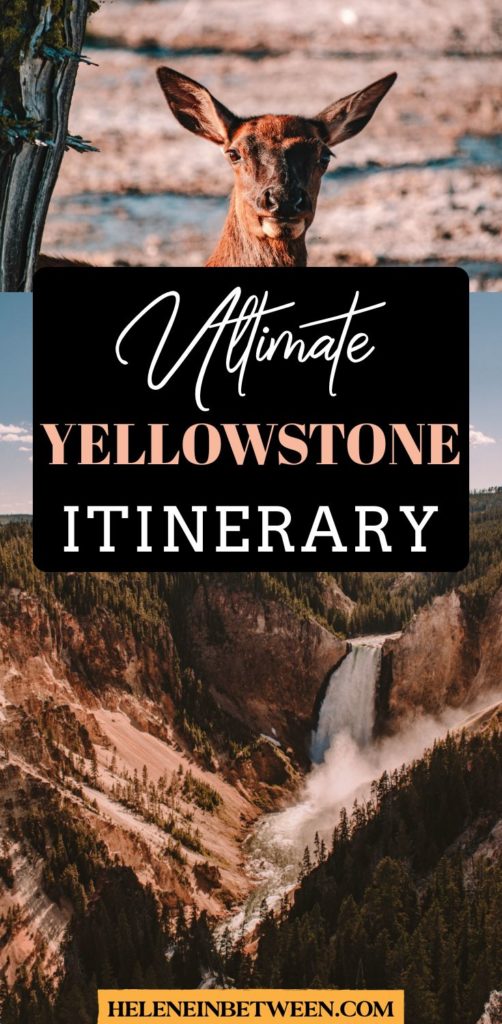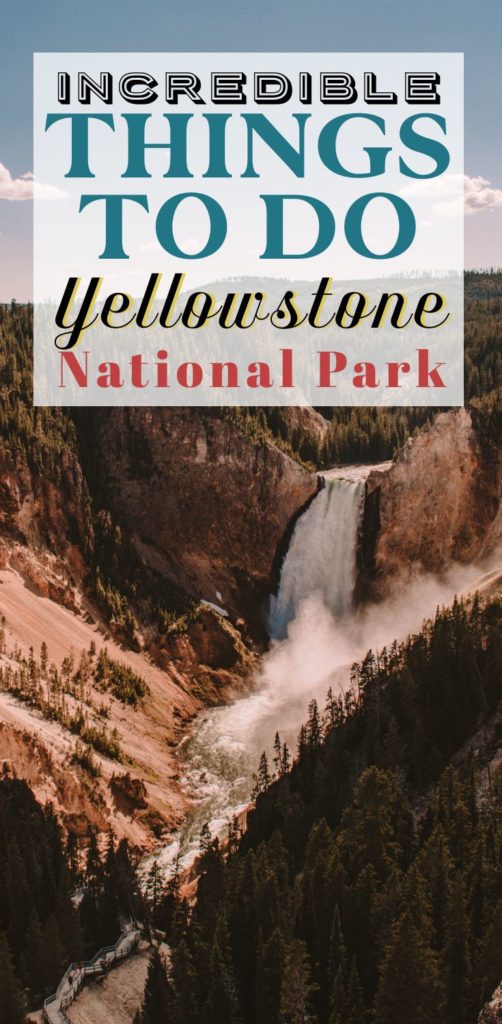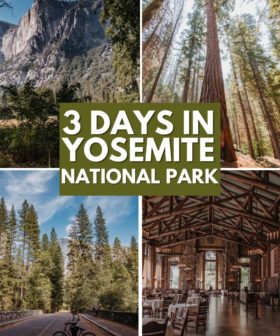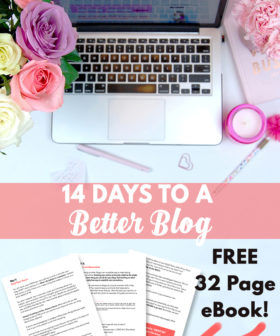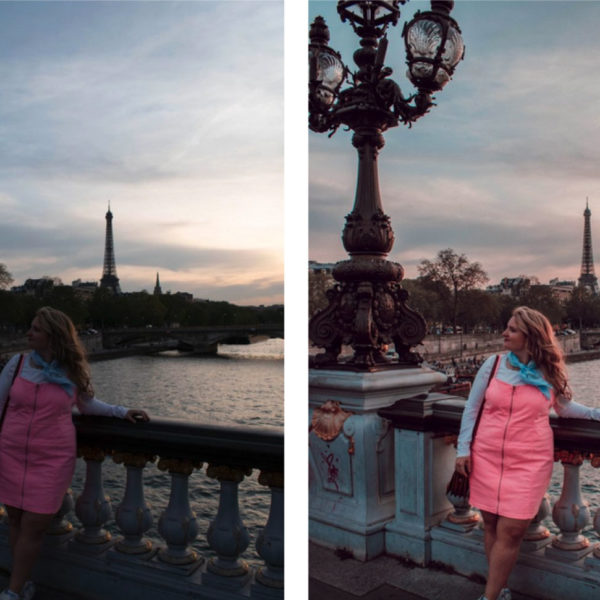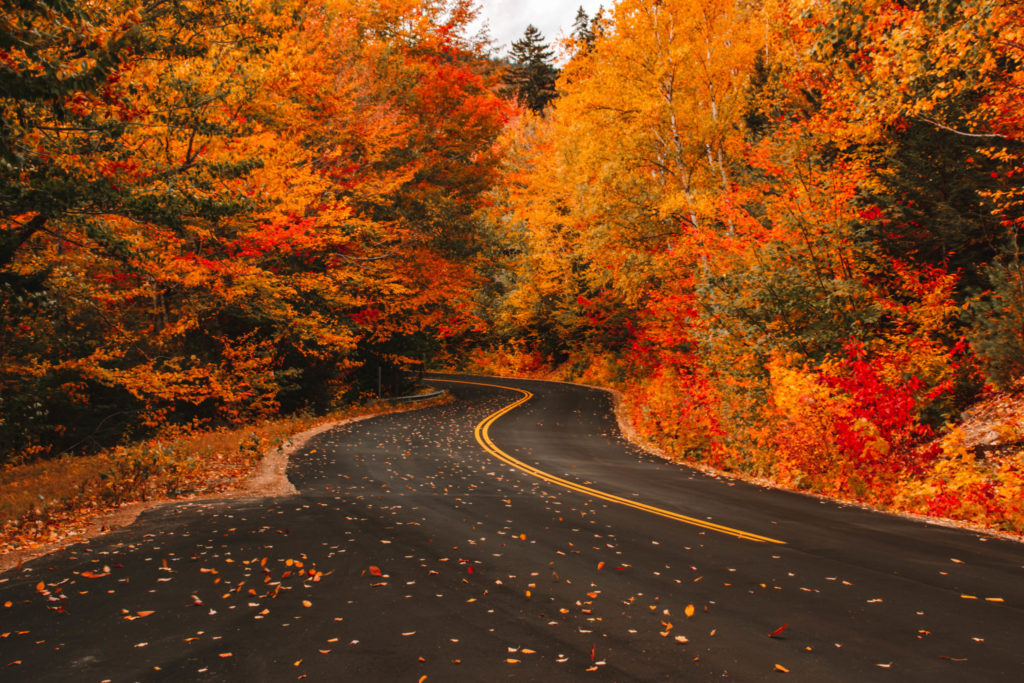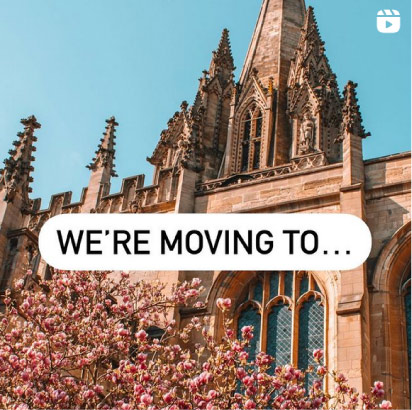Are you ready for the perfect 1 to 5 day Yellowstone National Park itinerary?! Planning a trip to Yellowstone can feel overwhelming, so this guide, complete with maps and itineraries for one day, two days, and more will help you plan your trip. Whether you want to cram everything to do in Yellowstone in one day, see all of the Yellowstone highlights in two days, or want to spread out your time with hikes and all the sites in three, four, or five days.
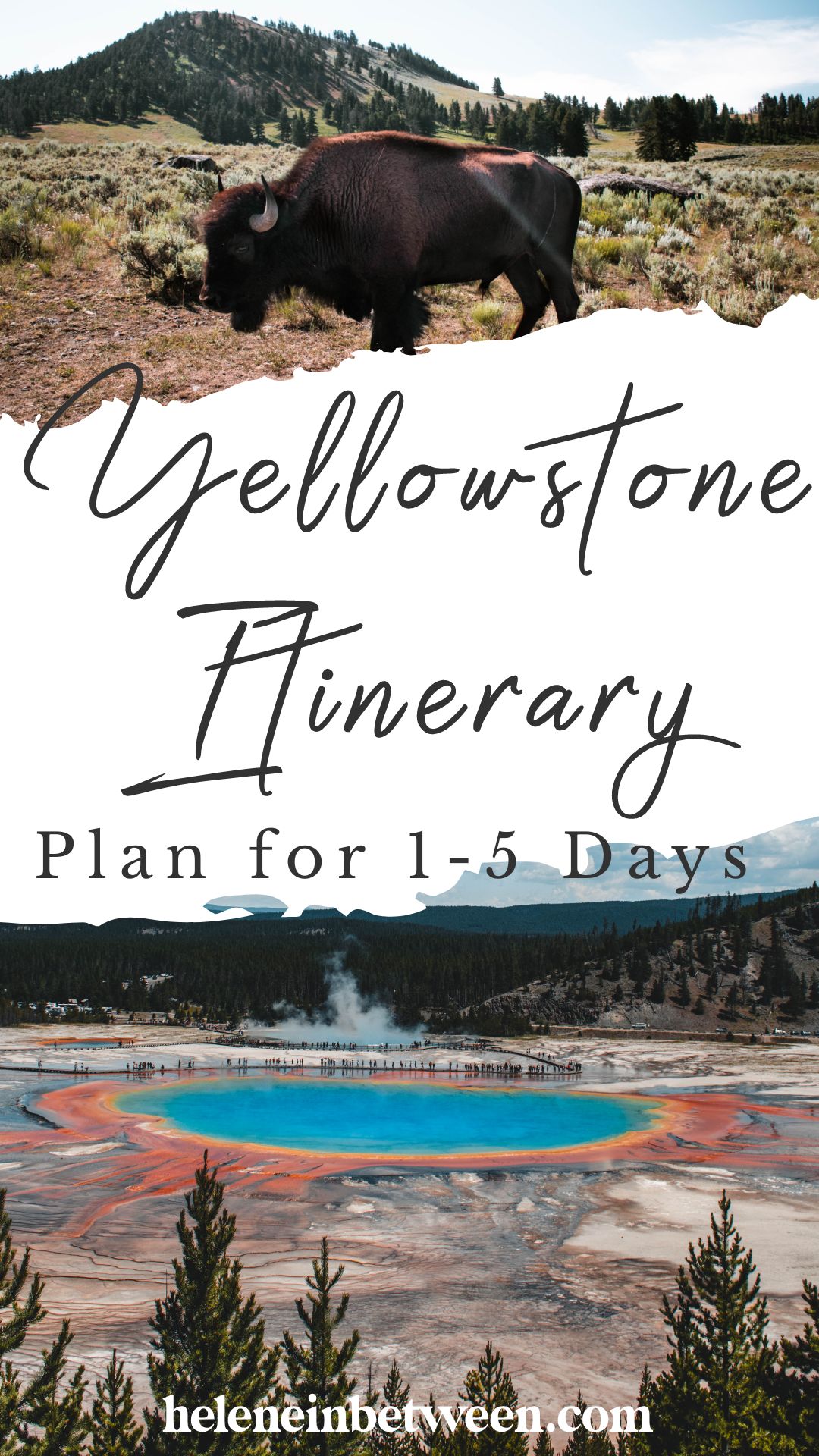
I just spent the best couple of days visiting Yellowstone National Park and being awe-inspired by it’s beauty. Visiting Yellowstone for 2 days is the perfect way to get a healthy dose of this incredible national park, see its unusual wonders, spot the wildlife, and learn more about the natural, but otherworldly, phenomenon. This itinerary will share all the highlights and must-do’s of the park, and give you tips on how to make the most of your time.
Yellowstone is something you MUST go and see. Pictures and videos simply don’t do it justice.
The national park idea is often referred to as one of America’s greatest contributions. In 1872, conservationists hailed the founding of Yellowstone as a landmark victory. In 1916 Congress treated the national parks service with the purpose of conserving natural scenery and wildlife. With two million acres of land, multiple park entrances, beautiful drives, 500+ geyser basins to visit, and a multitude of wildlife, you’ll see there is tons to do in Yellowstone.
[toc]
Recommended Itinerary at Yellowstone
I suggest spending at least two days in Yellowstone to make the most of your time. However, if you need to, you can cram quite a bit in a day. Of course, you can easily stretch your Yellowstone itinerary in a full 5 days. As the world’s first national park, you’ll quickly see that it is quite large with lots to do. But have no fear! This guide will help you plan the perfect trip to Yellowstone.
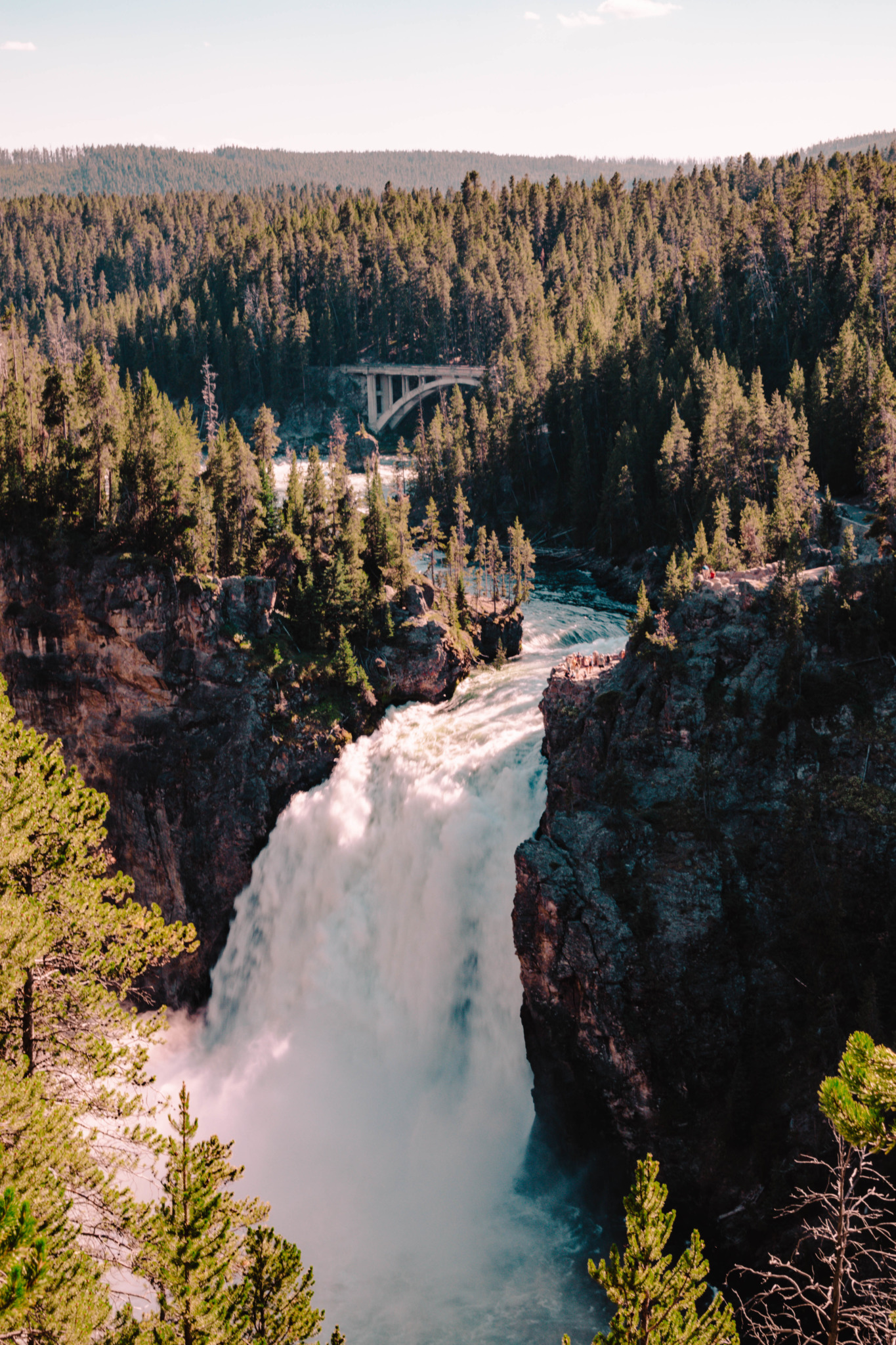
I recommend that you come to Yellowstone from Jackson or Grand Tetons. This is about a 2-hour drive and you’ll enter the park from the South entrance. There are 5 entrances to Yellowstone, so it’s convenient to enter everywhere. But for our purposes of where we start, the South Entrance is closest to Old Faithful.
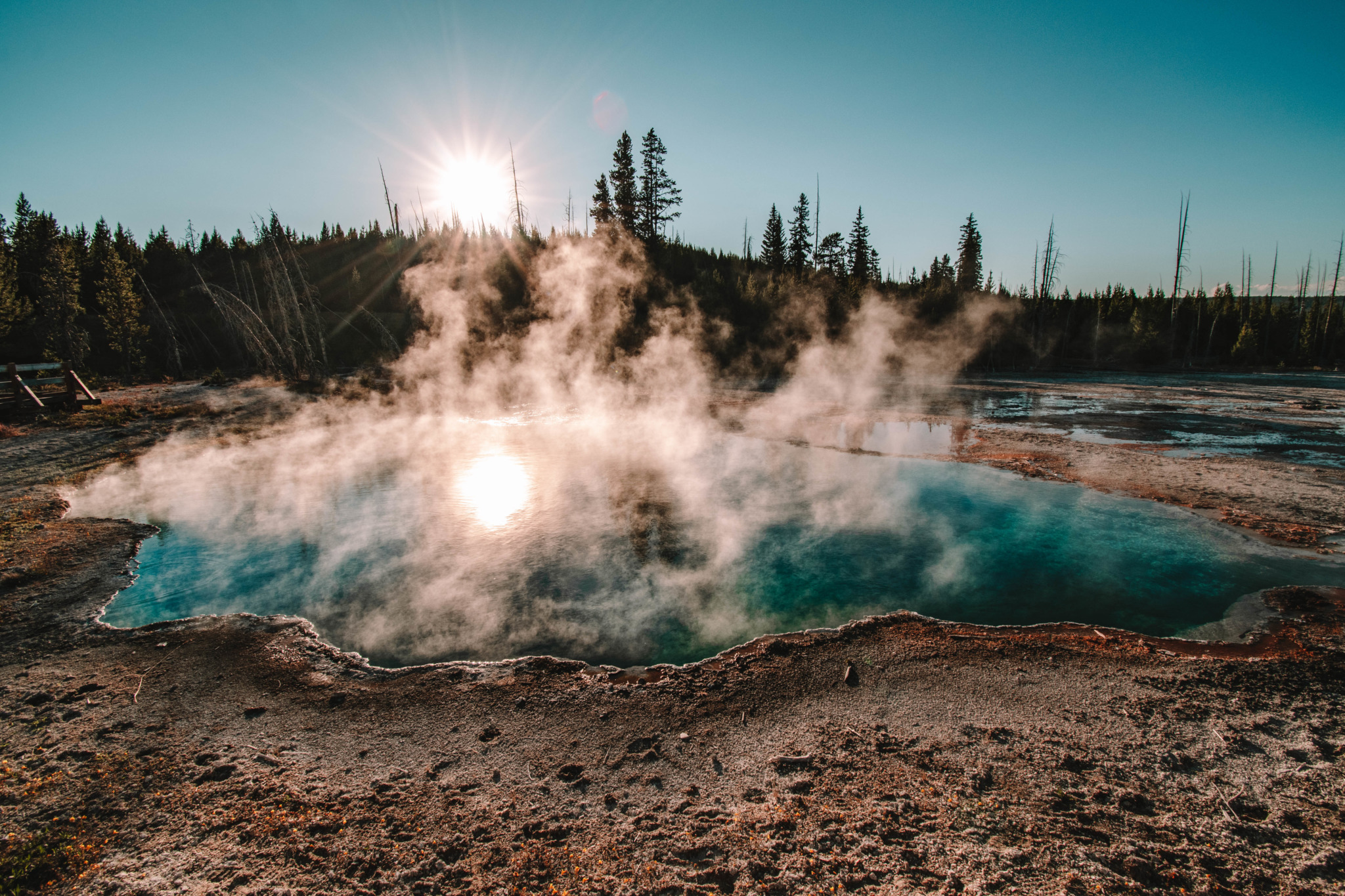
Be sure to, “pack your patience” as it can be busy and crowded. Wildlife jams occur when people stop or slow down to see the animals.
Overview of Yellowstone
Yellowstone has been designated a U.S. biosphere reserve, a world heritage site, and is one of the largest national parks in the lower 48 states. Yellowstone encompasses 3,472 square miles (2,221,766 acres) which makes it larger than Rhode Island and Delaware combined. Its boundaries protect over 10,000 thermal hot springs and there are hundreds of thermal features.
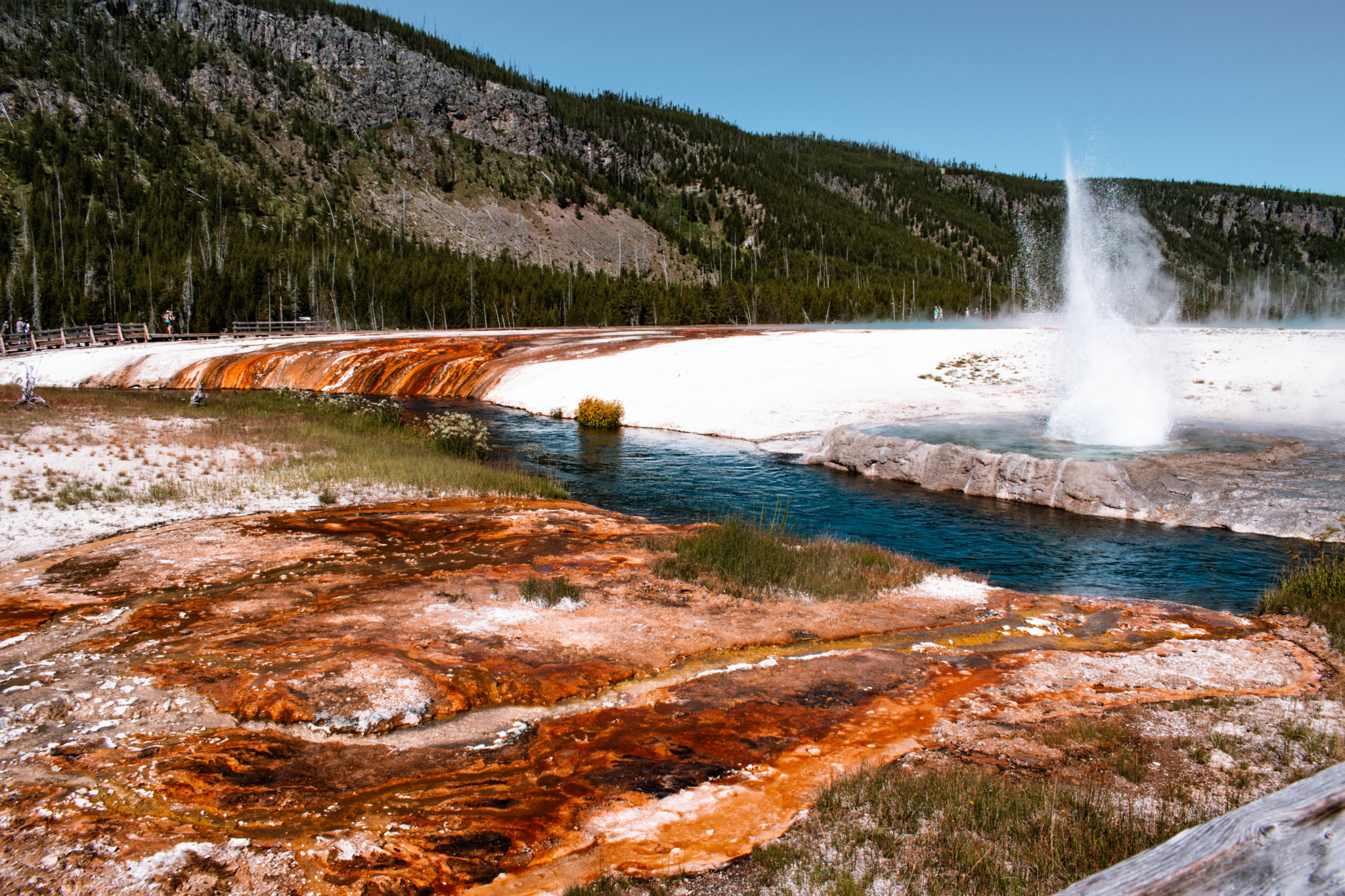
There’s also an incredible variety of wildlife providing some threatened species a wilderness habit. The earthquake here in 1959 was on the the largest on earth! Yellowstone is still an active volcano, called a volcanic caldera. The caldera formed over the past 3 eruptions that occurred over the past 2.1 million years. This “super volcano” coated the earth for miles with ash. These layers became compressed, or welded, creating a layer of rock now called Huckleberry Ridge tuff. The volcano erupted twice more, and the most recent eruption left a giant crater or caldera in the heart of Yellowstone that is 30 miles wide and 45 miles long.
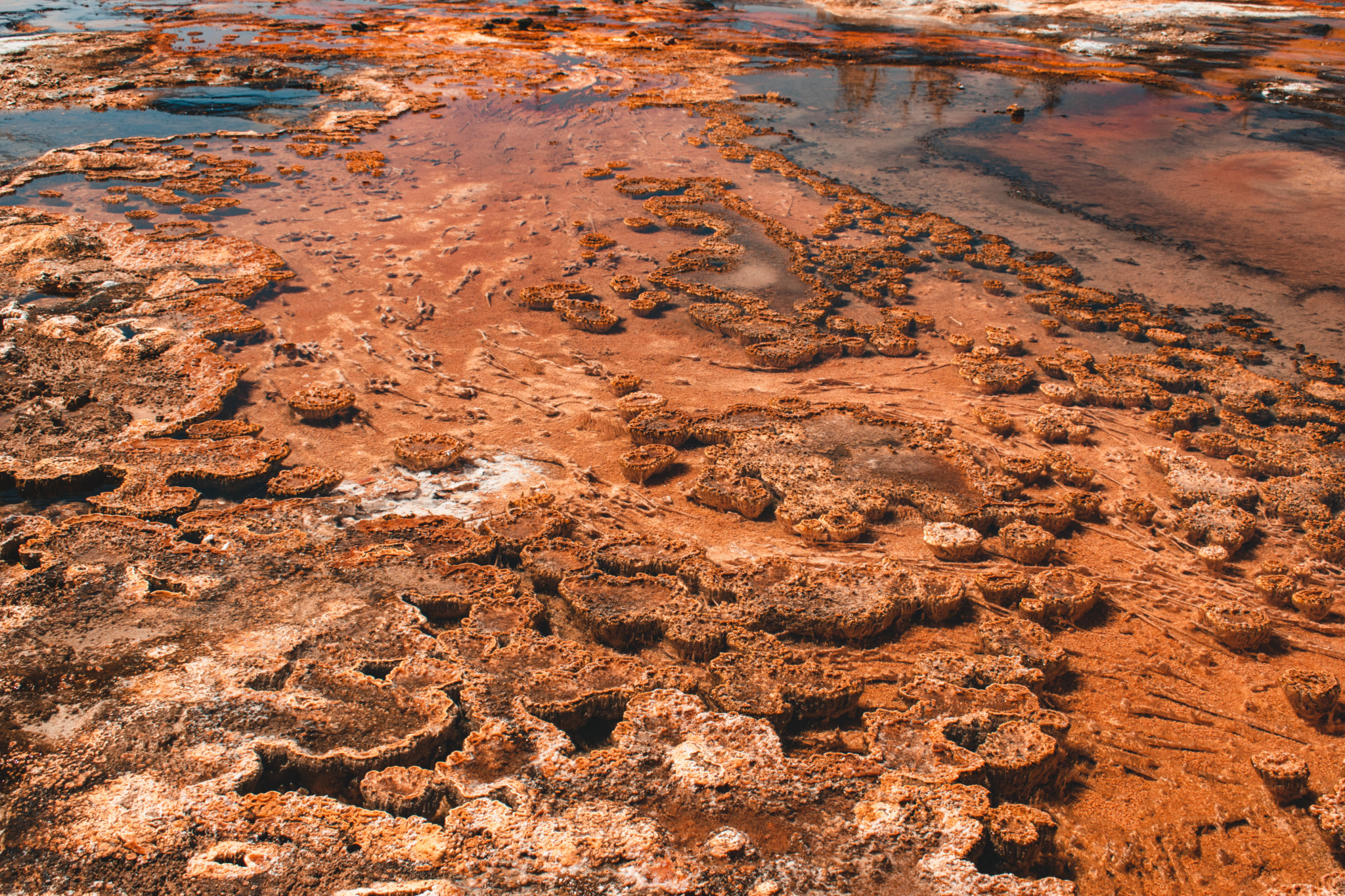
Each year, more than 4 million people visit Yellowstone, so being prepared is key!
One Day in Yellowstone – Southern Loop
If you only have one day in Yellowstone, this day ensures you get to see some highlights! Below is a map sharing the landmarks and stopping places for each.
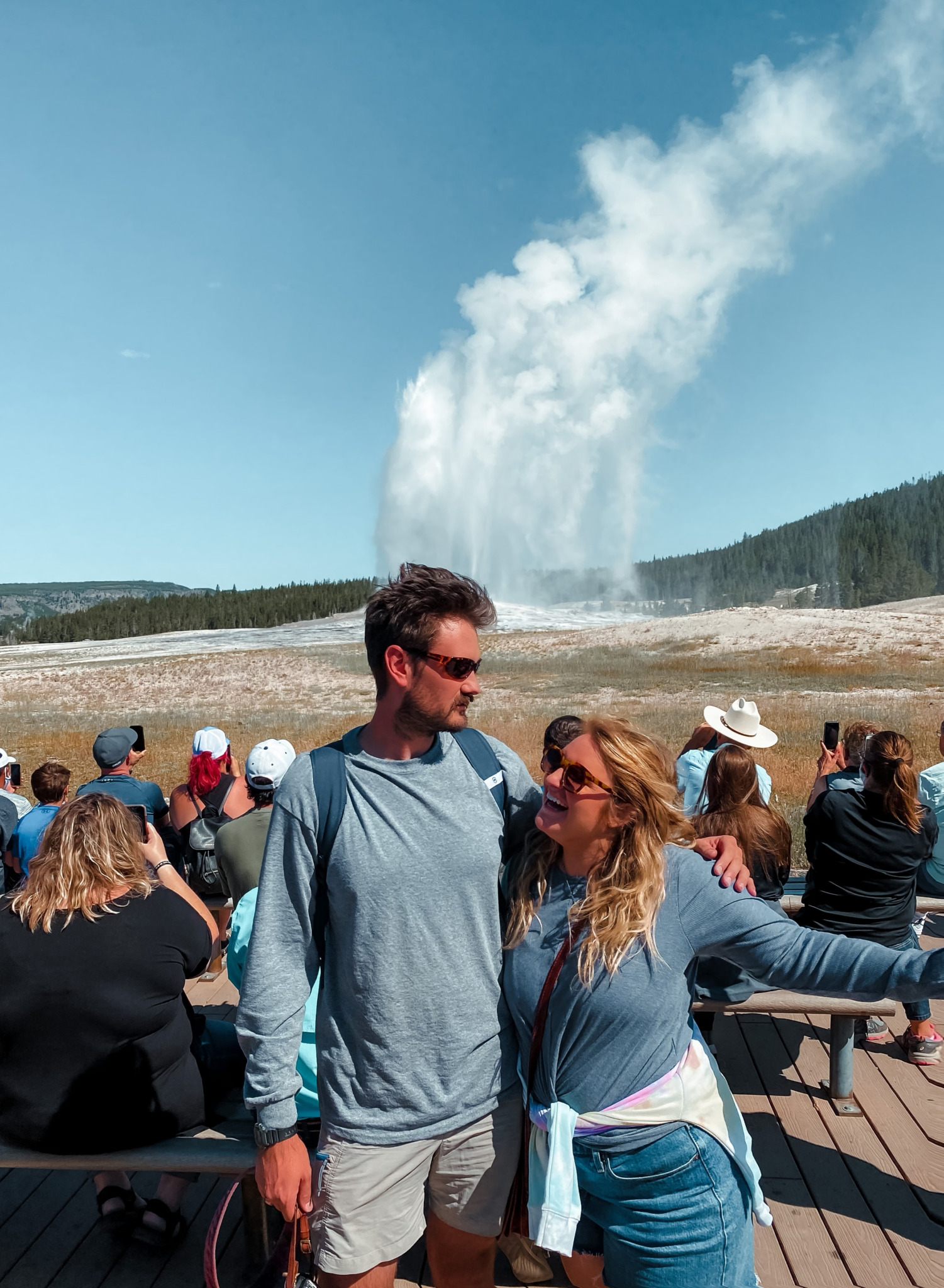
When you come in you’ll be handed a map and info about the park, highlights, and any specific info about closings, etc. The Yellowstone Park's website will also have this information too!
This map highlights all the top places you need to see in one day in Yellowstone.
Start with Old Faithful. You can look online to get a rough idea of when the geyser will blow, and faithfully she blows about every 95 minutes. Of course, a trip to Yellowstone isn’t complete without a visit to this geyser. But it can be the most crowded spot. So you want to be one of the first there to avoid crowds.
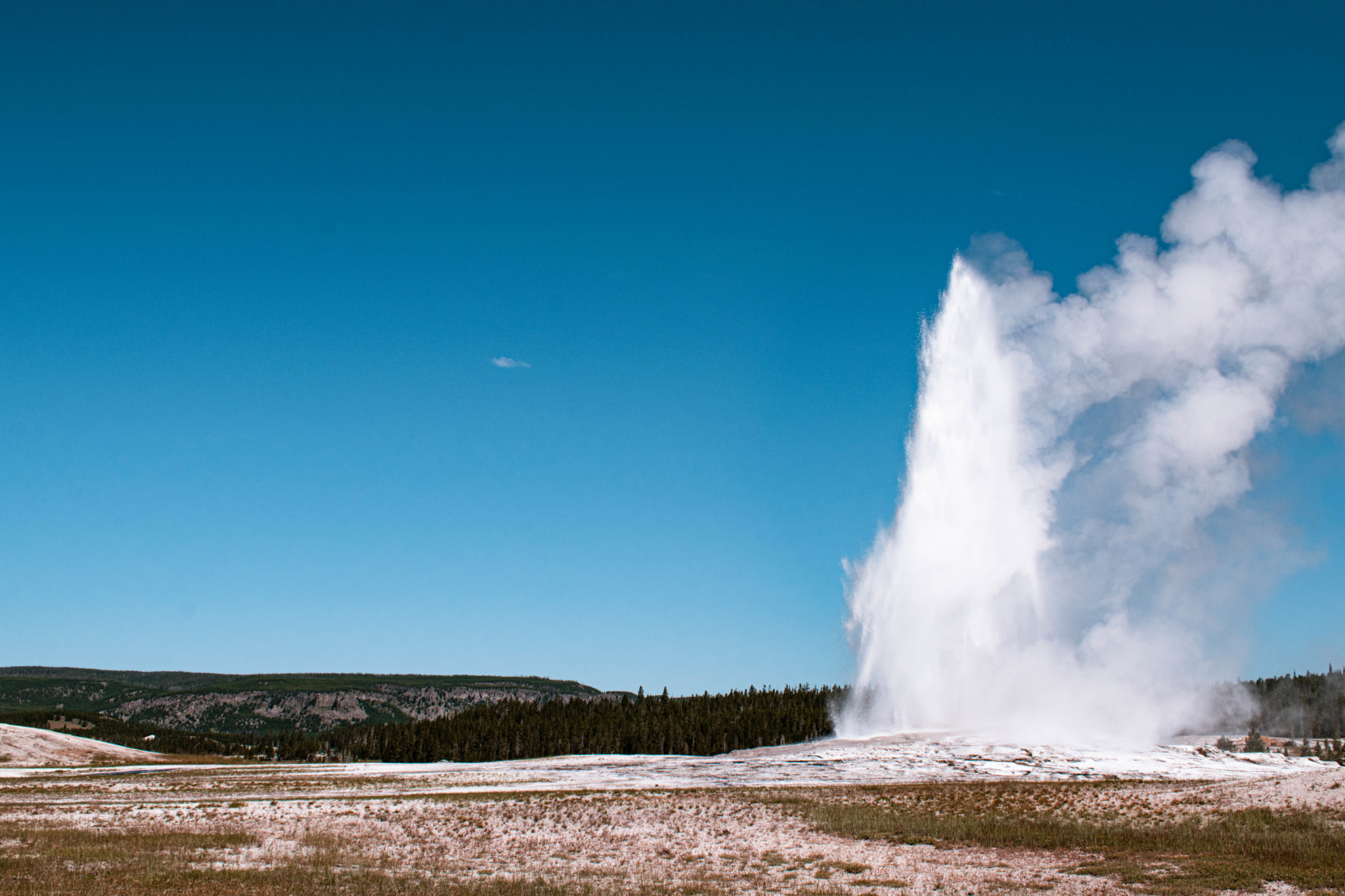
There is a gift shop near Old Faithful but my suggestion is to skip it and keep heading on, beating the crowd. We were glad we did as we saw a line form outside the gift shop.
Next, drive a very short distance to a not very well marked spot, Black Sand Basin – we almost missed it! Right after Old Faithful, turn left. Black obsidian volcanic glass sand gives us the name. Here you’ll find INCREDIBLE pools. The four types of thermal features are geysers, hot springs, mud pots, and fumaroles. Starting here will give you a good preview of what’s to come. Oranges, greens, and other colors in and around the Hot Springs come from the thermal heat loving microorganisms.
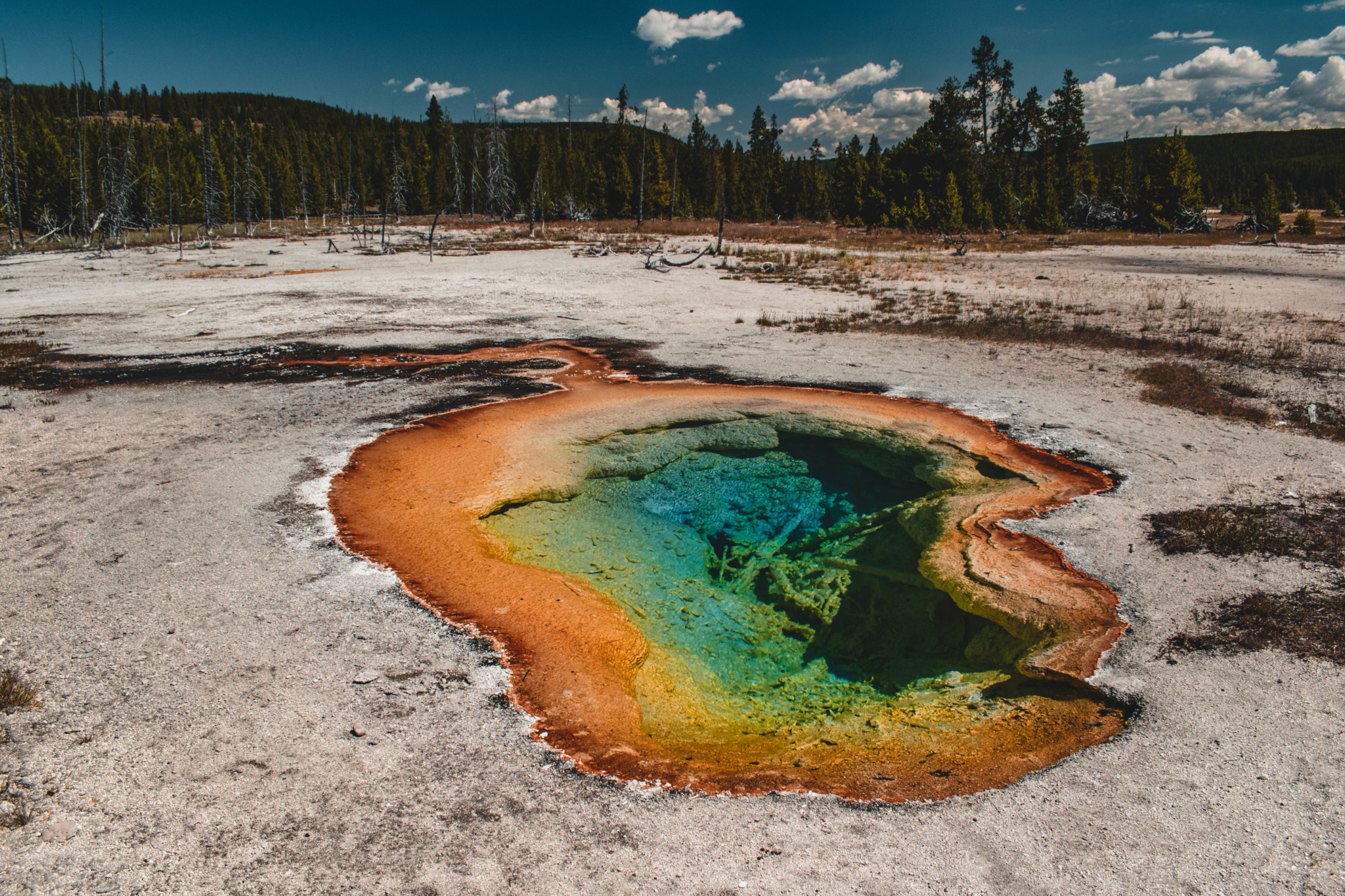
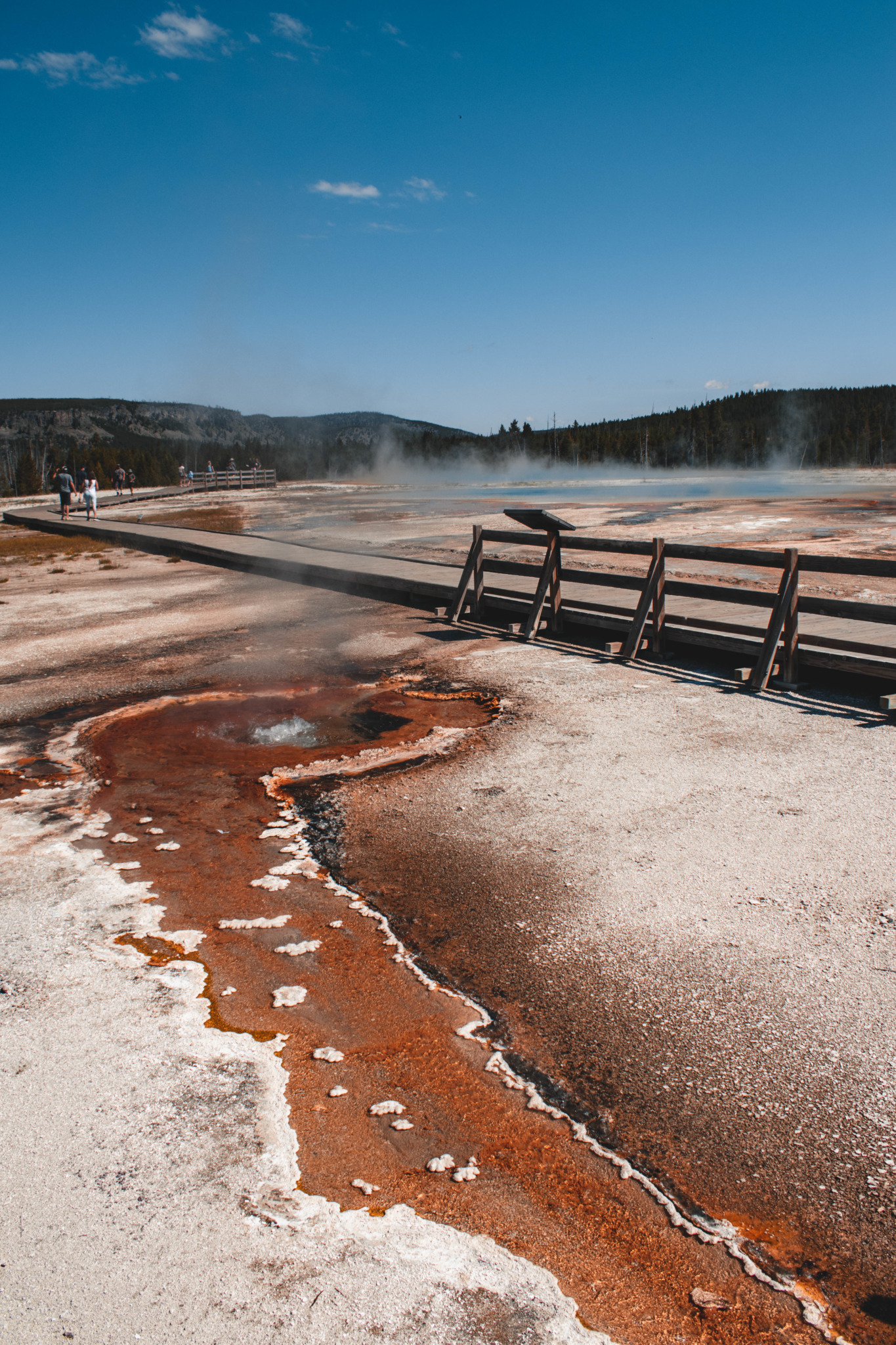
There’s easy to walk board walks nearly every where that will loop you though the sites.
Next up, is Biscuit Basin. The vibrant pools look as if someone cracked open a giant geode and poured bright blue Dawn dish soap in them. I was mesmerized by the jewel colored blues and greens At first glance geysers and basins may appear to be stuck in lifeless places, but amazingly, they team with microscopic life year-round. Even the hottest thermal features contain tiny microbes.

Next, head to Beryl Springs for more hot springs of the Gibbon Geyser Basin streaked with yellow and orange next to the bright blue.
The über cool Grand Prismatic Spring follows. It’s a hike up to get the view from the overlook (about a mile and a half) but it’s worth it for the superior perspective. Try and observe the rainbow colored steam as you approach as the water vapor reflects the color of the pool!

From here, drive over to the Artists Paint Pots, one of the coolest features in my opinion. To get here is a one mile trail, containing the hottest hot springs in Yellowstone. These are constantly changing, as the sign reads “the only constant is change.” So my pictures might look different to how it looks today. Also, the consistency changes based on the season. In spring, it’s more muddy since there is plenty of water. But as summer progresses it becomes thicker like stew. Also, be aware of the flying mud!
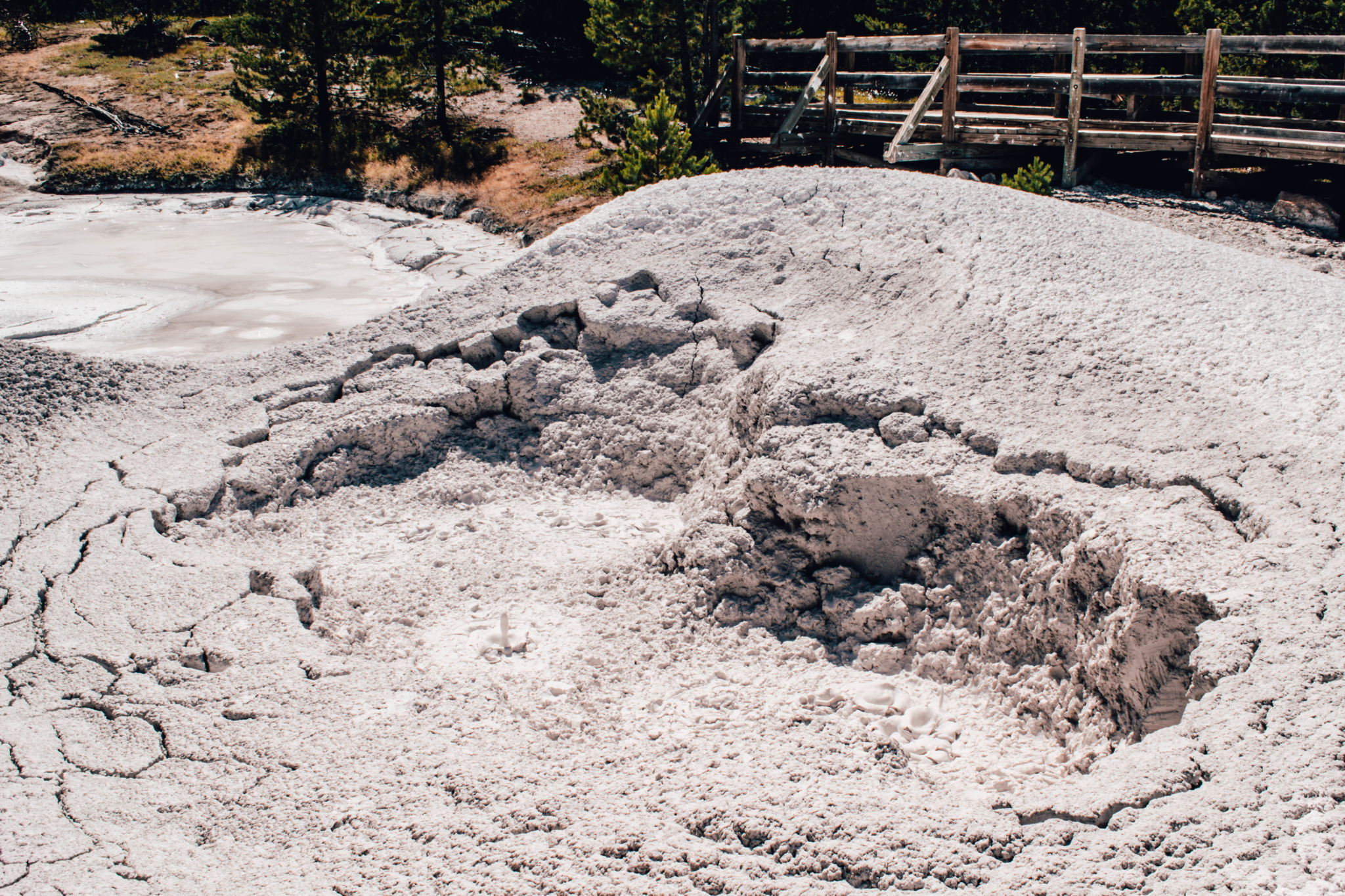
Don’t just look at the interesting wonders of Yellowstone, make sure to listen, and smell, too. The gurgling and almost heartbeat-like sounds are therapeutic. Although the smells of the sulphur aren't always for the faint of heart!
Towards the end of this very full day, we went to see the Grand Canyon Yellowstone. Make sure to leave time to go to different lookout points for different views. It’s exceptionally lovely. Here, the Yellowstone River plunges 308 feet, for a gorgeous setting.
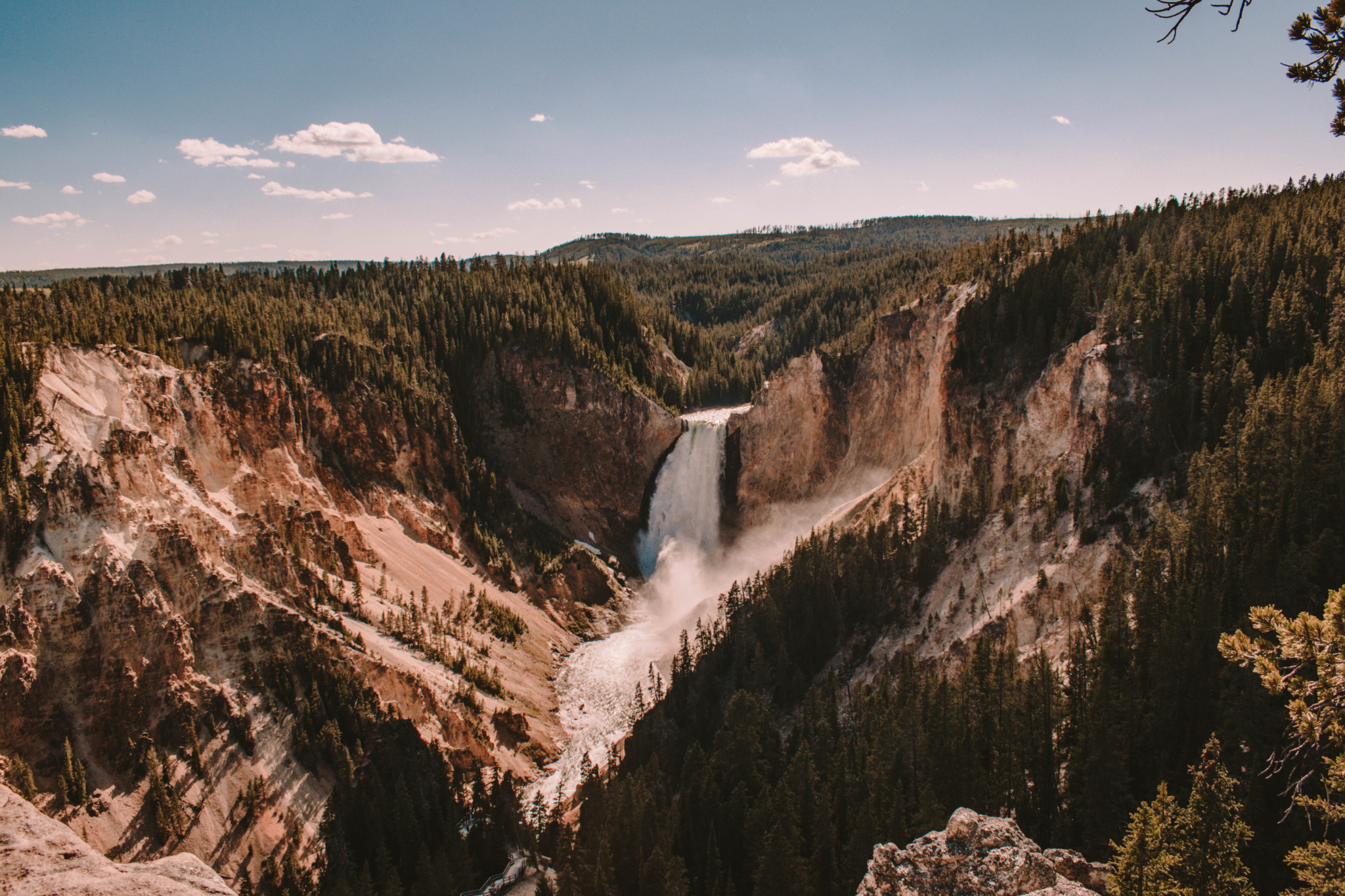
As you leave the valley, go west towards Hayden Valley and you’ll see grazing bison and maybe even a grizzly bear!
We ended in West Thumb Basin to complete the Southern Loop and saw Sulfur Cauldron as well as the Mud Volcano. Caution, this stuff can be stinky!
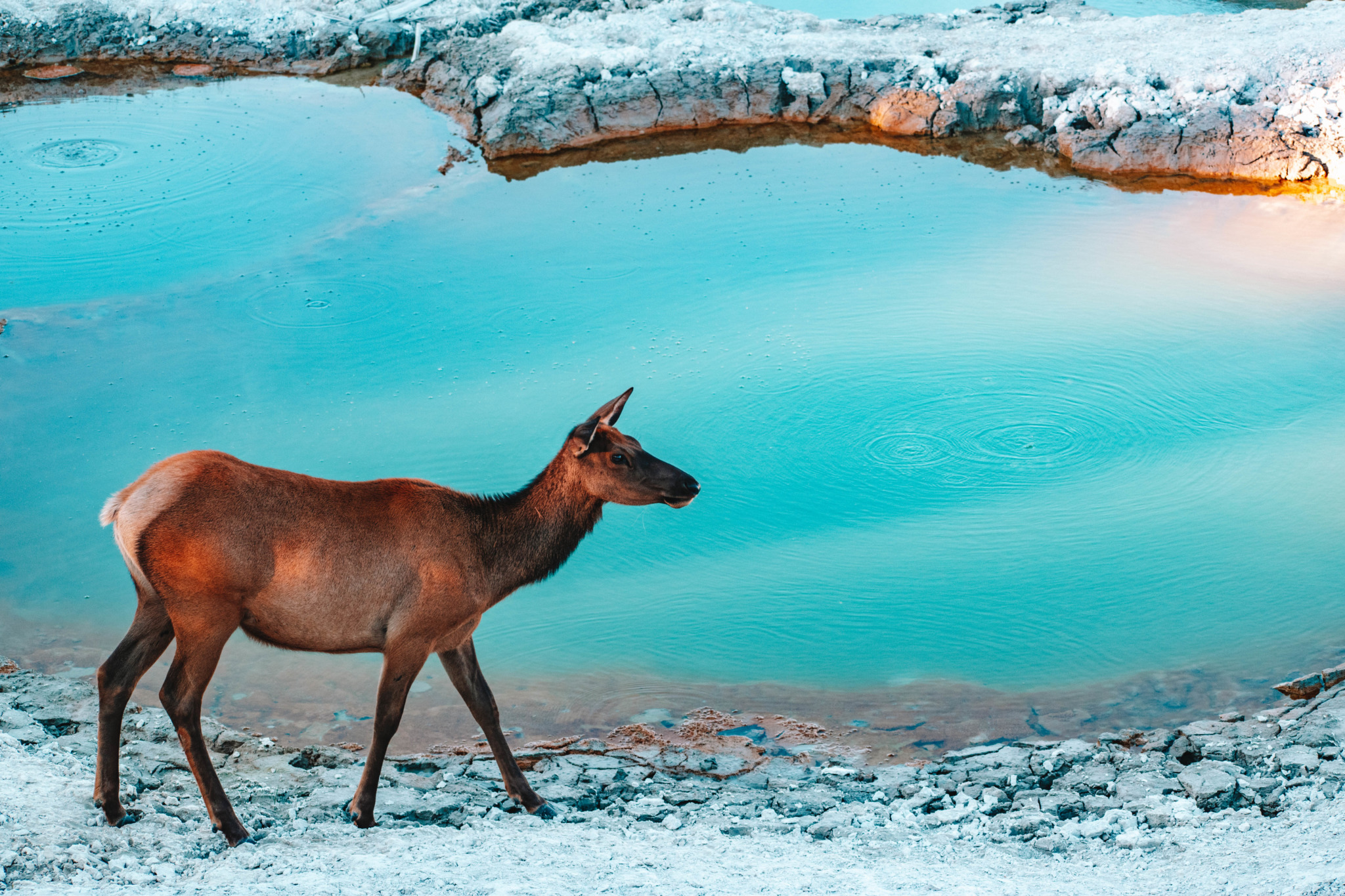
You could EASILY push this itinerary into a couple days if you want to take it easy! But we did this in a day and really enjoyed it. To me, you never want to miss anything, so we made sure to see a lot of the highlights the first day.
PRO TIP: Many of the spots today are driving distance. You’ll drive to the attraction then take a short walk around. Each spot will tell you the length of time it takes you to walk around. The signs are also informative and give helpful and interesting information about the park.
If you'd like, and you're particularly short on time or energy, go with a guide! Check out this fully guided Yellowstone itinerary.
Two Days in Yellow Stone – Add the Northern Loop and See the Wildlife
If you have two days in Yellowstone, follow the above itinerary, and then add on everything I share below. In my opinion, two days in Yellowstone is the perfect amount to see nearly everything.
We started our day waking up in West Yellowstone, which is actually in Montana. The park is mostly in Wyoming but a couple sections lie in other states. We drove about 2 hours from here to go to Lamar Valley. On the way, make sure to check out Roaring Mountain, particularly active in the morning.
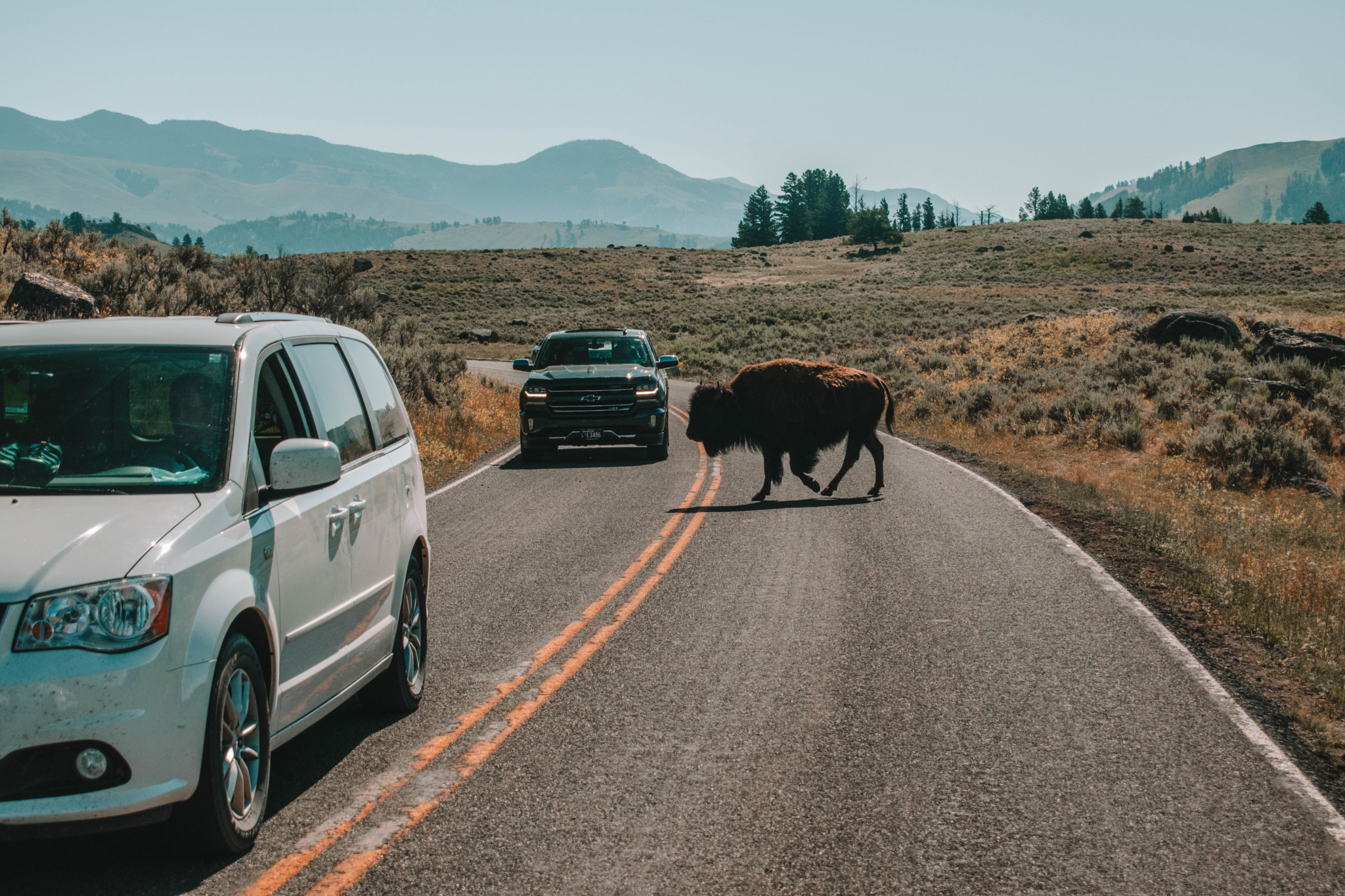
Without question, Lamar Valley is the best place in Yellowstone to see wildlife. Just a short drive around this pretty valley we spotted bison crossing the road, a lone black wolf, a herd of elk, deer, badger, osprey, and chipmunks! The wildlife community in Yellowstone is one of the largest and most diverse on earth.
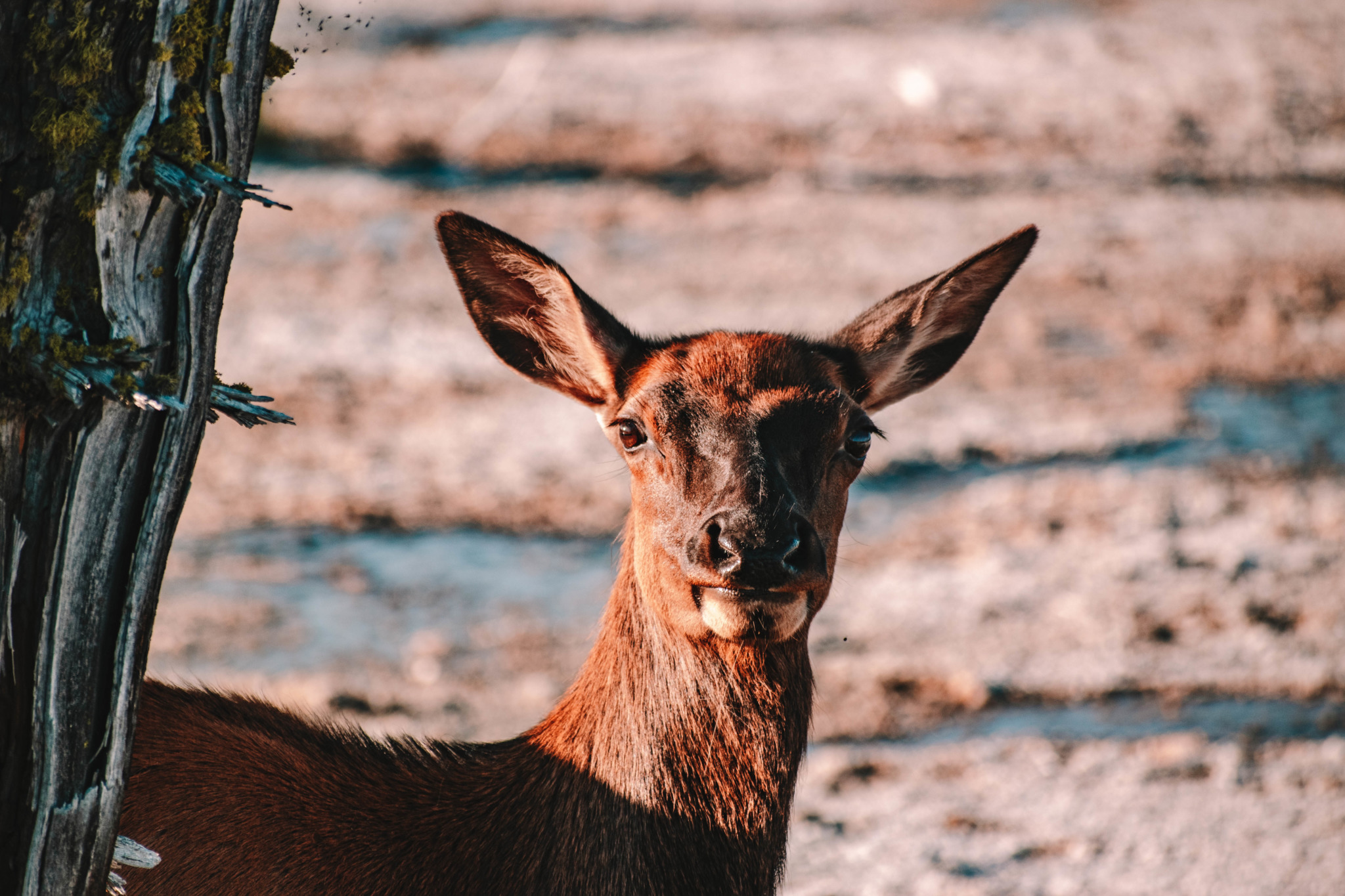

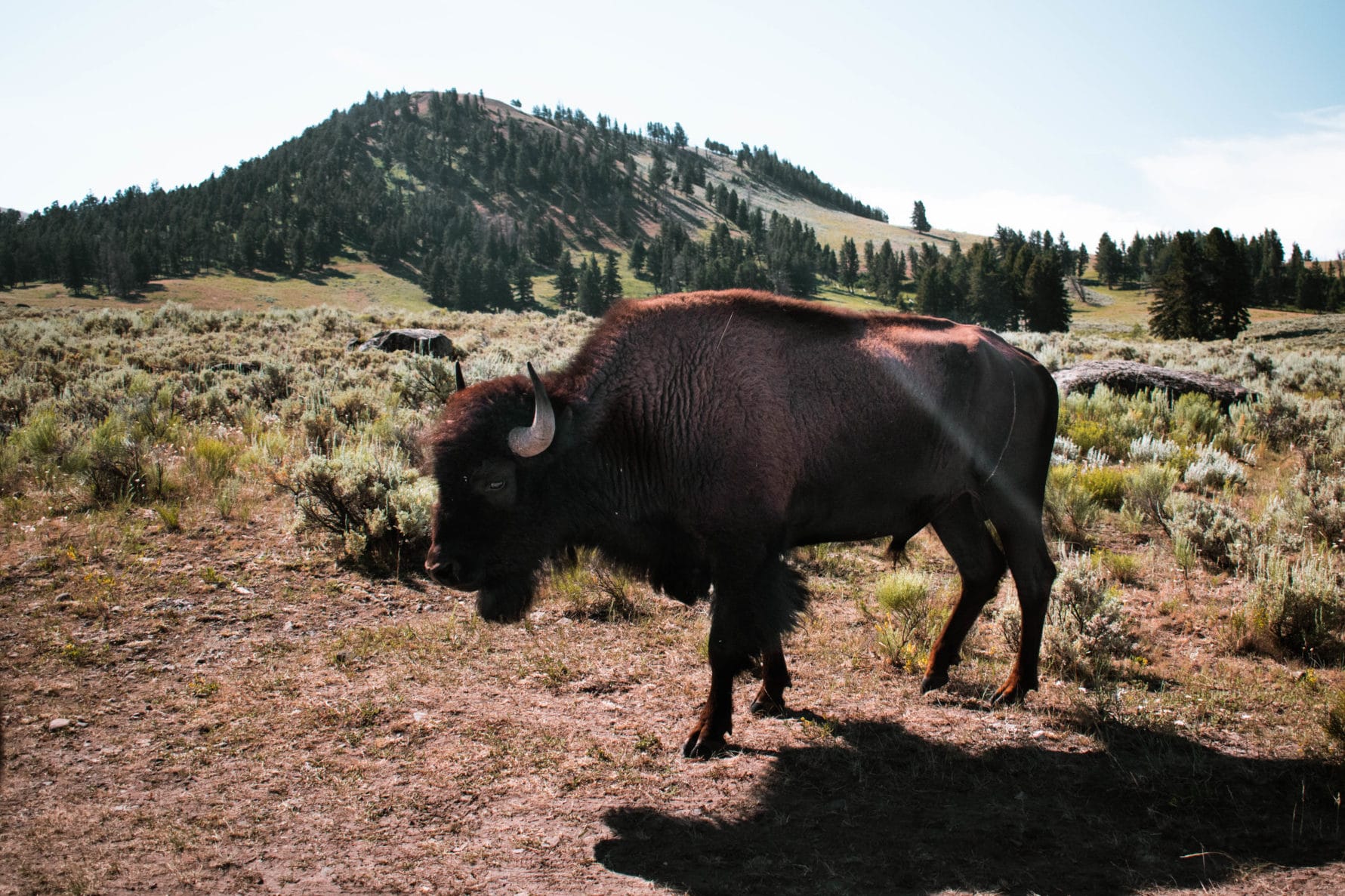
From here, we’ll continue driving, taking some stops along the way. The Petrified Tree is a quick and easy must see. Then I suggest taking the under a mile loop for the Forces of the Northern Range Trail. This has great information on the area that I didn’t see anywhere else.
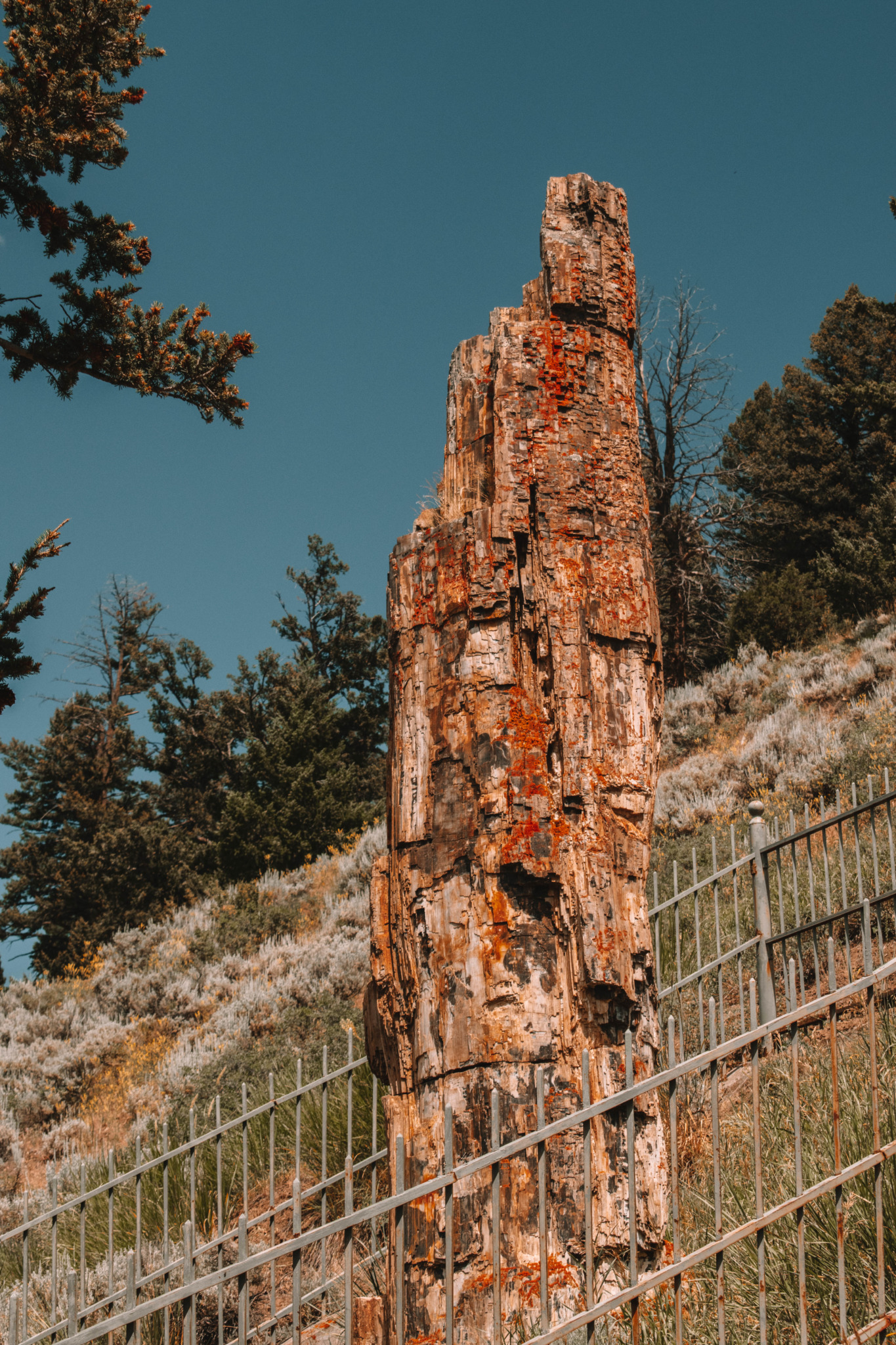
Stop for lunch in a picnic area, alternatively, you can head to Mammoth Hot Springs where you’ll find a busy visitor center and a grill. The line was so long we opted out and had lunch near a river.
Next are the incredibly cool Mammoth Hot Springs. This is a large complex of Hot Springs billowing hot, steaming water creating layers of white, gray, and orange streaks and pools. This area is vast, you can see just a piece of it, or can spend a couple of hours on the boardwalk exploring.
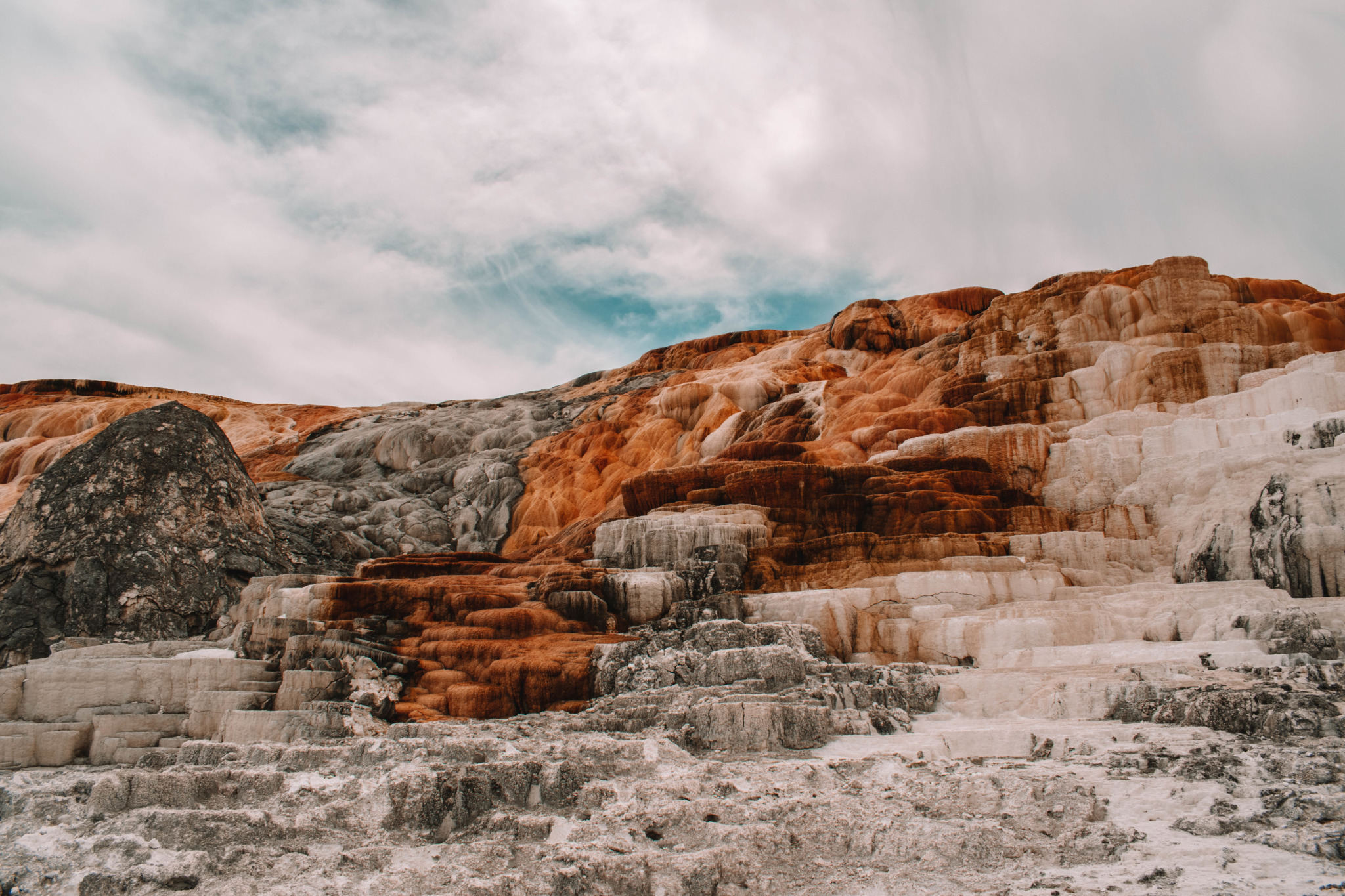
It was closed when we were there, but you can swim in Boiling River Hot Spring!
We ended day two with the Norris Geyser Basin, a kaleidoscope tie dye basin of raw acidic land and unique pools. Again, it’s up to you how much time to spend here, as this is a large area to walk around. I suggest opting for the Porcelain Springs loop at the very least. The milky color of the mineral deposited here inspired the naming of porcelain basin.
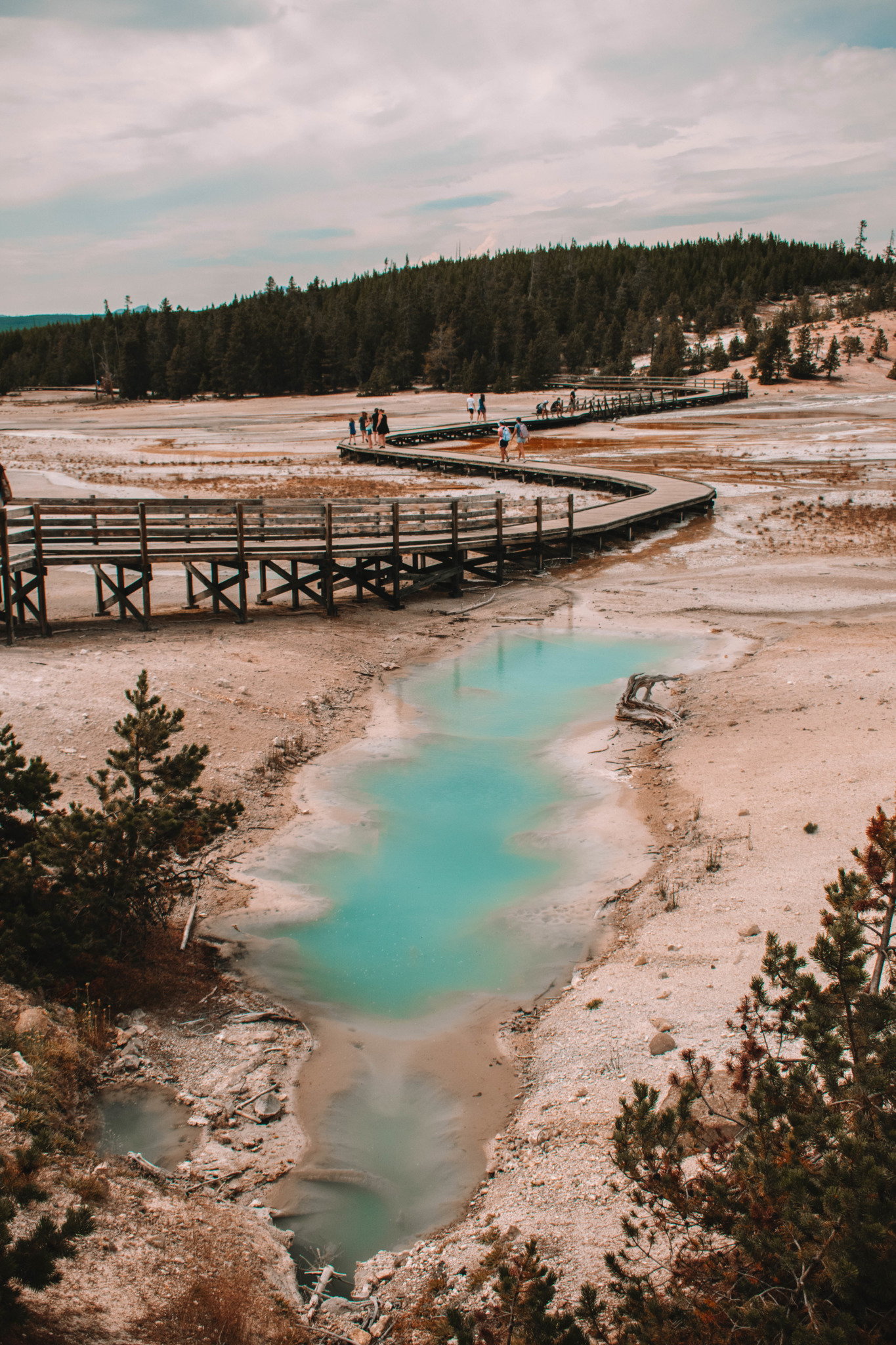
On the northern loop, there are many waterfalls to see such as Undine Dallas, Wraith Falls, and Tower Falls. So don’t forget to take a look!
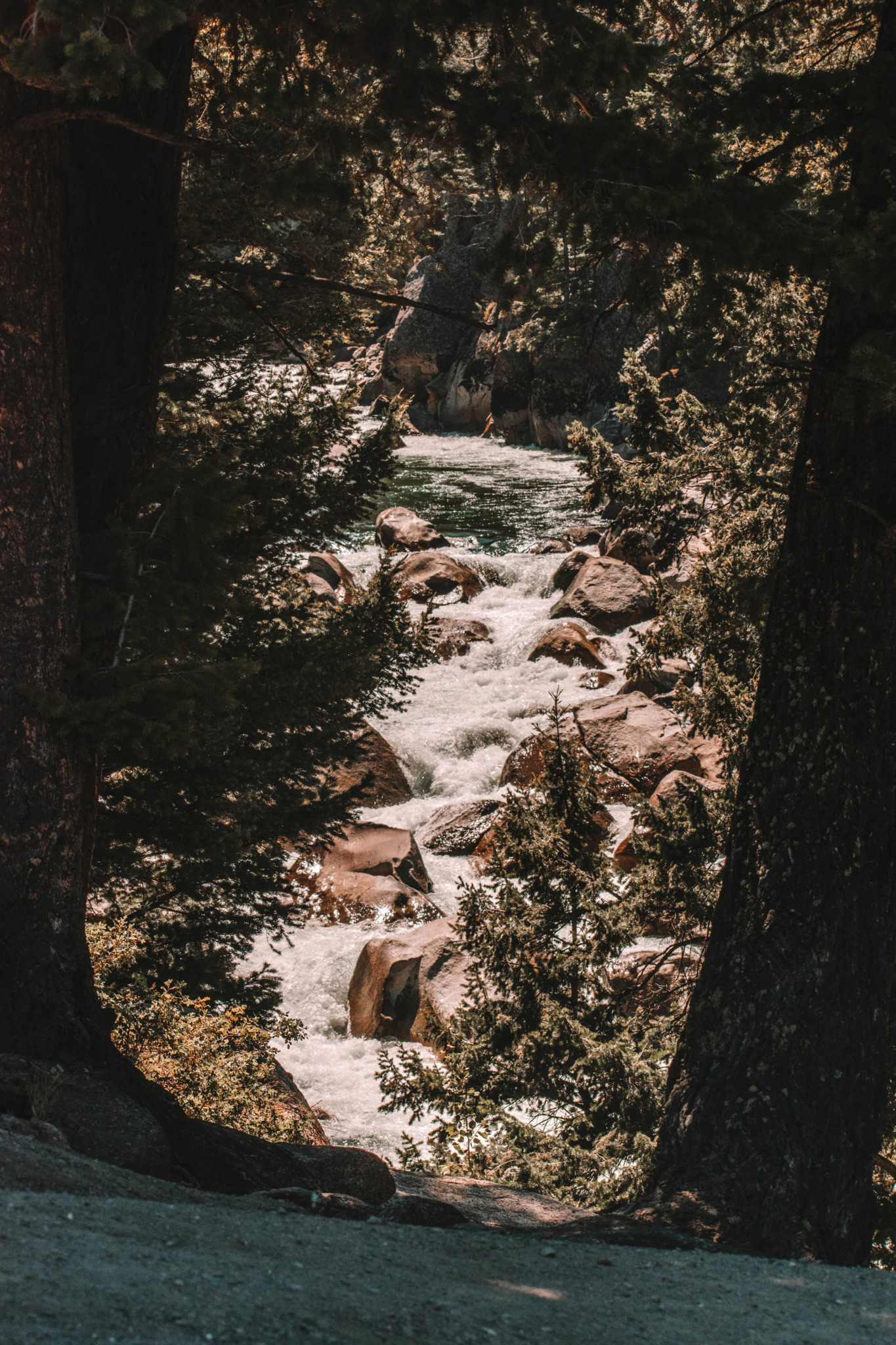
I know this was quite a lot of information, so I’ll be breaking down each day, what to add on, as well as tips for the park to make the most of your Yellowstone Itinerary.
If you'd like your trip planned for you, there's a great, fully guided 2-day Yellowstone tour you can take right here.
Three Days in Yellowstone
If you have extra time in Yellowstone, I definitely suggest adding on a hike. There are so many great hikes in Yellowstone. Some suggestions are Mount Washburn trail which is about 6 miles. There's also Storm Point Hike, or you can take a look at the map and pick an area you want to explore.
You can also spend time at the beautiful Yellowstone Lake. This is a massive lake, so there are many areas to hang out, have a picnic, hike, or enjoy the scenery.
Lastly, you can check out Dunraven Pass, which is near Mount Washburn. This is a scenic drive that is well worth your time!
Four Days in Yellowstone
For four days in Yellowstone, make sure you see all the main highlights I've mapped out for you above. Next, you can add on an activity such as fishing- there are ample areas to do this. You can go with a guided fishing excursion to ensure you catch some fish and enjoy the scenery.
Five Days in Yellowstone
If you want to take your time, you could easily break up my first days of Yellowstone and take it more leisurely, and add in some hikes here and there as you explore the park. As I mentioned, the park is giant. So take time to enjoy some of the activities.
If you have extra time and are not sure where else to go, you can always go to Grand Tetons and Jackson Hole to explore that wonderful and beautiful area of Wyoming. This is a tour of Tetons + Yellowstone here.
Daily Yellowstone Itineraries at a Glance
Day One – Old Faithful, Upper Geyser Basin, Artist Paint Pots, Gibbon Geyser Basin, Grand Prismatic Spring (Midway Geyser Basin), Yellowstone Grand Canyon, West Thumb Basin
Day Two – Lamar Valley, Norris Geyser Basin, Mammoth Hot Springs, Norris Geyser Basin. If you have a few more days in Yellowstone, I suggest adding on this for each of the additional days you’ll be there.
Day Three – Hike Mount Washburn Trail (6 mile loop) or Storm Point Hike, Yellowstone Lake, Dunraven Pass
Day Four – Go fishing (this is a fly fishing paradise and you’ll see people fishing everywhere, particularly in Lamar Valley) or hike Bunsen Peak Trail (4.6 mile loop trail).
Day Five – Go on a hike – there are over 1,000 miles of trails in Yellowstone. Today I suggest the Elephant Back Mountain trail which is 3.5 miles. Alternatively, go to Grand Tetons and explore Jackson Hole with this extra day!

Yellowstone Tips
How to avoid crowds – get there EARLY, or even during the evening. The busiest time is from about 12 – 3pm. The best days to go are durning the week, preferably Tuesday-Thursday. About 4 million visit the park every year, so being prepared and coming early is your best bet.
Dogs at Yellowstone – Dogs are not allowed at the attractions or hiking trails in Yellowstone. Which is most places.
How to save money at Yellowstone – I recommend getting a National Park Pass. This gives you access to all the parks and pays for itself in 2 trips! Especially if you plan to visit any other national parks this year, I think this would be the best way to save money. I also suggest buying souvenirs out of the park. You’ll find a wider selection of things like magnets or t-shirts. In addition, you can bring in your own food. Just make sure you keep food safe because bears can break in.
Yellowstone wildlife – Bison have been known to charge people. Don’t approach them. Bears should also be left alone. Do not leave out food, or approach them, and I recommend carrying bear spray and/or a bell. Let the animals be wild! The best bet for bears is to not surprise them. Never feed any animals. If they get used to human food they start getting too close to humans. I recommend bringing a camera with a zoom lens, since you’ll often see bison roaming the fields, a herd of elk dotted on the rolling hills, or even a bear or wolf. Binoculars are also a good idea as well!
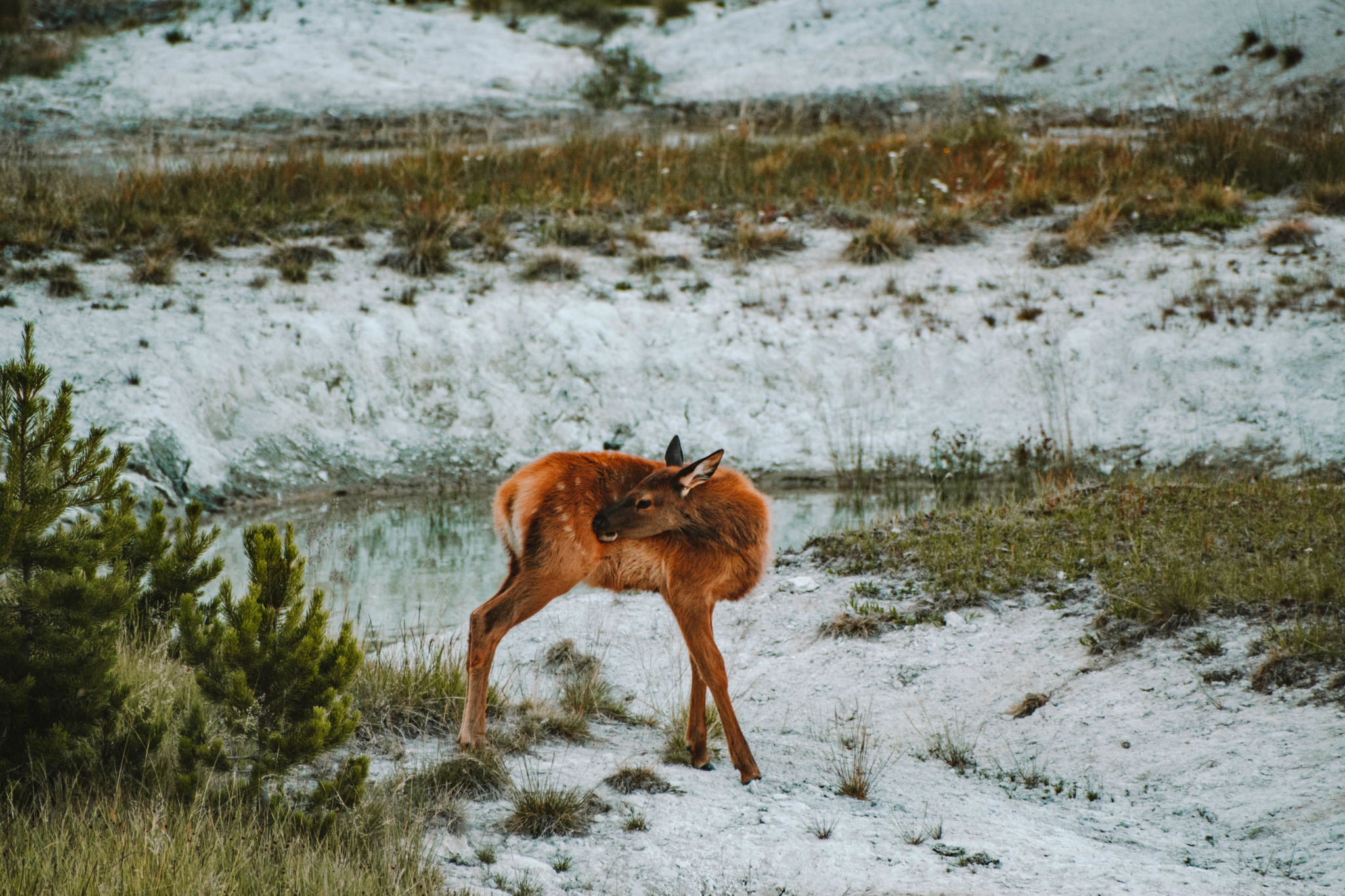
RVing in Yellowstone – We drove our RV and stayed overnight in West Yellowstone, just outside the park. You can camp at the park, but you’ll need to reserve ahead of time! And spots get very busy. We parked our RV very easily in the Grant Village Visitor center for the day while exploring before taking it out of the park to set up camp. There was ample, shaded parking here.
Eating in Yellowstone – If you're visiting during Coronavirus time I HIGHLY recommend bringing food. Restaurants are not open and there are long lines to get food to go. Just make sure you pack it securely so bears can't get to it.
Where to Stay in Yellowstone – There are TONS of hotels and lodging near the park. I recommend staying the night before in South Yellowstone or near Grand Tetons or Jackson Hole. During our time in Yellowstone we stayed in West Yellowstone in Montana. A great place to stay there is the Clubhouse Inn.
Another good area to stay is in towns such as nearby Cody. Aptly named “The Cody” is a good choice.
Some great places to stay in or near Yellowstone park are Canyon Lodge and Cabins, Grant Village, Mammoth Hot Springs and Cabins, Old Faithful Inn, or Lake Yellowstone Hotel.
When to Visit Yellowstone – Summer is the busiest time, but also a great time to easily navigate the Park. Spring brings out more wildlife and wild flowers. Winter is also an interesting time since you'll see different wildlife, but you'll also have to battle the snow. Fall is maybe the best time to avoid crowds and see some fall foliage!
Important note about Covid-19 at Yellowstone – some museums are closed and some shops have limited openings, meaning you might have to wait in line to get inside.
I hope this post has helped you plan the perfect itinerary to Yellowstone!
Pin the post:




